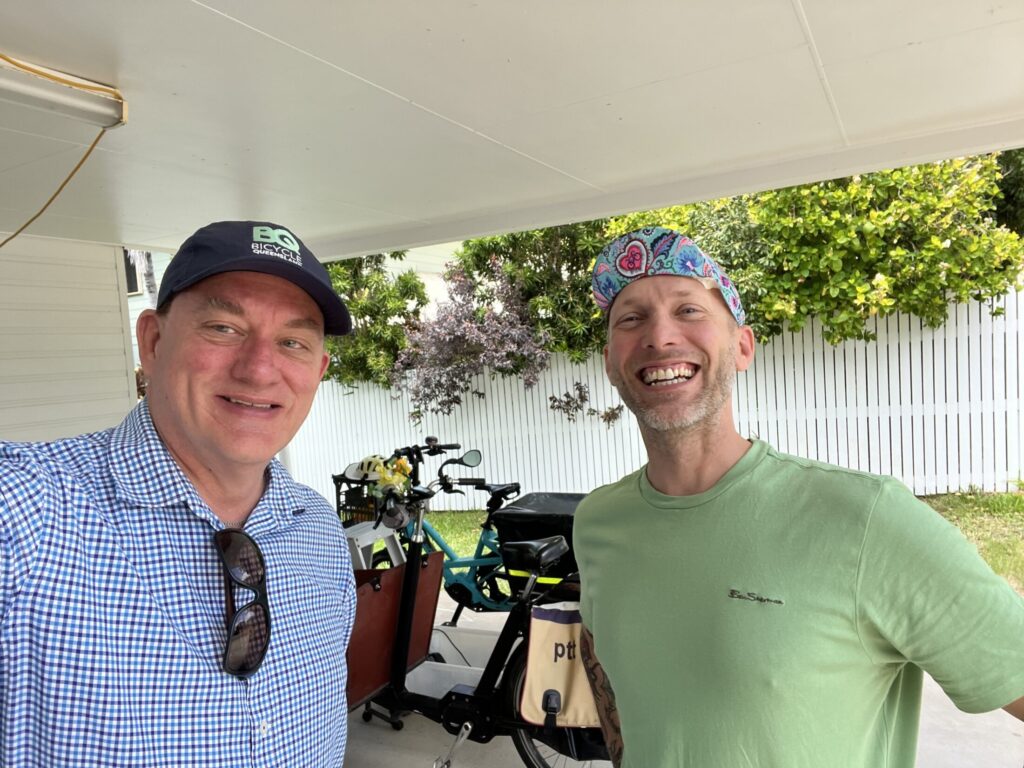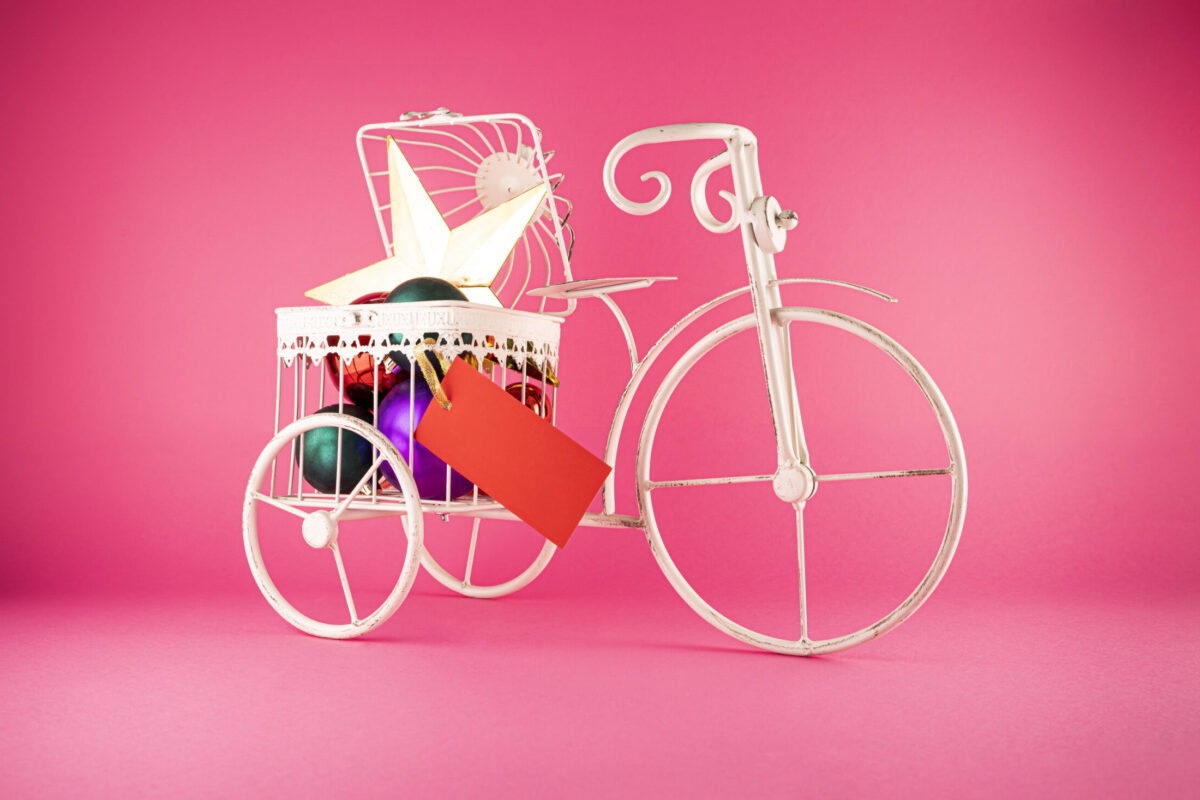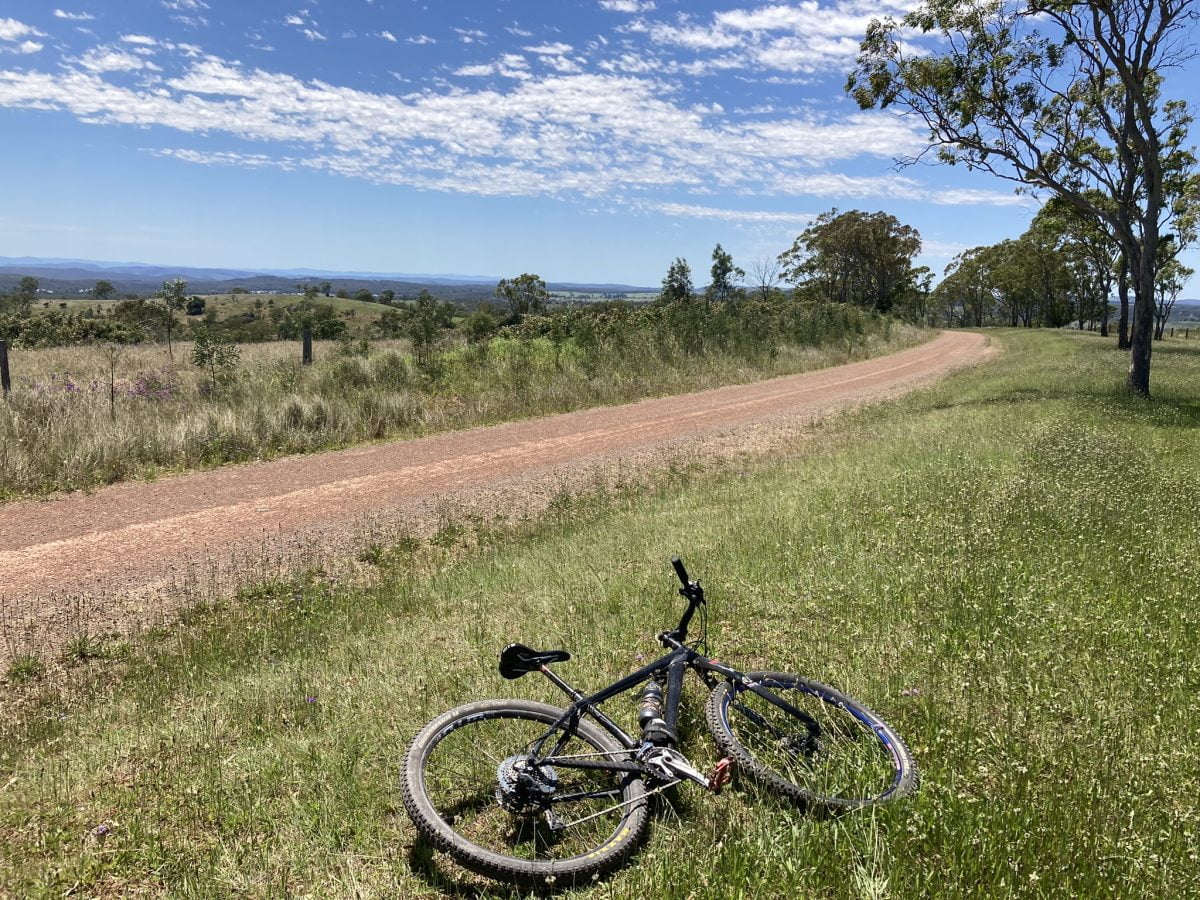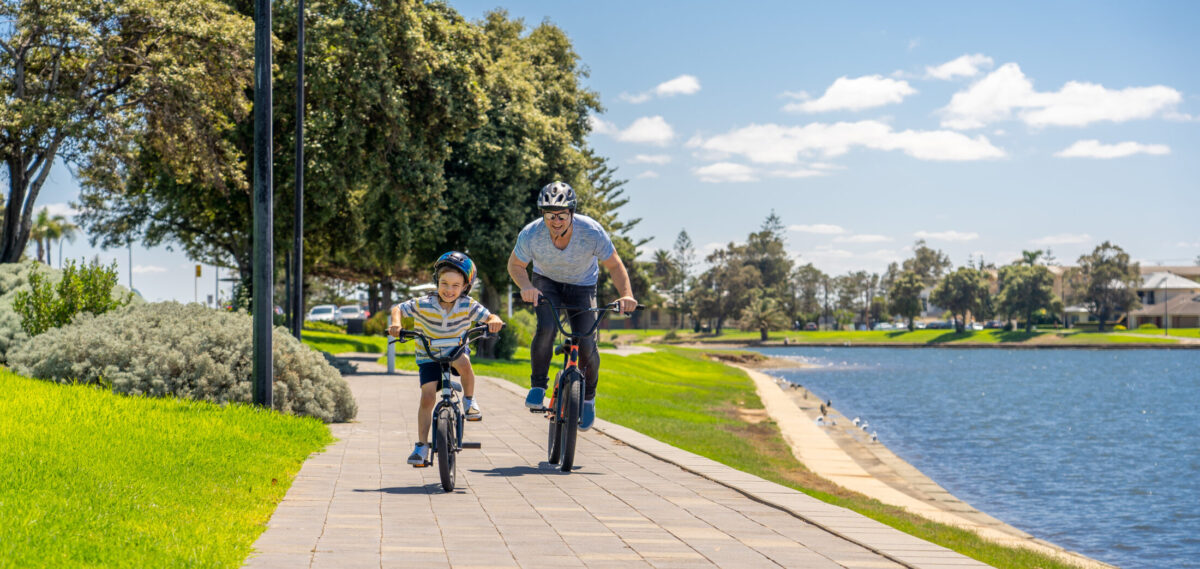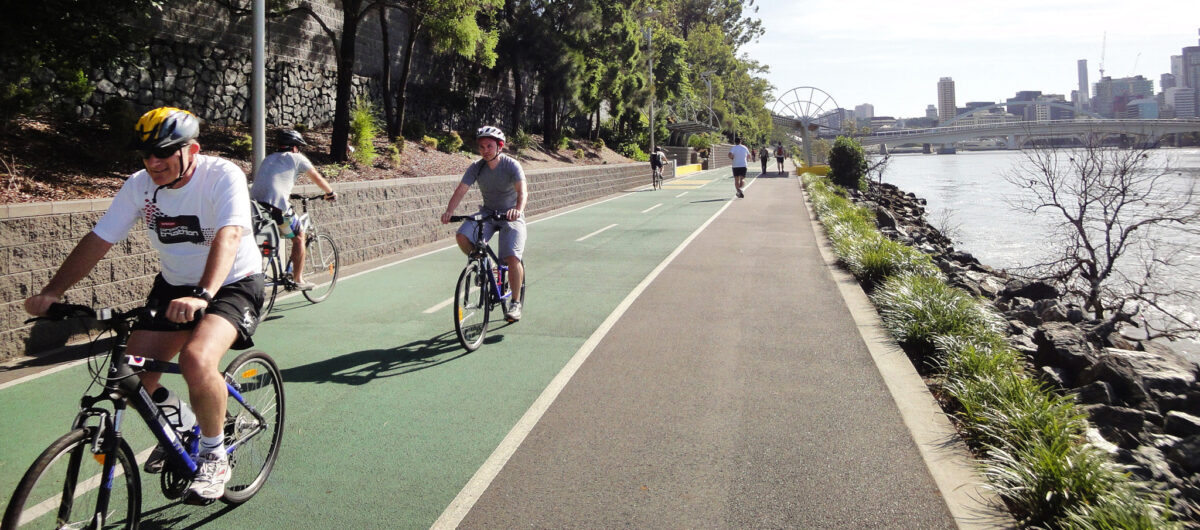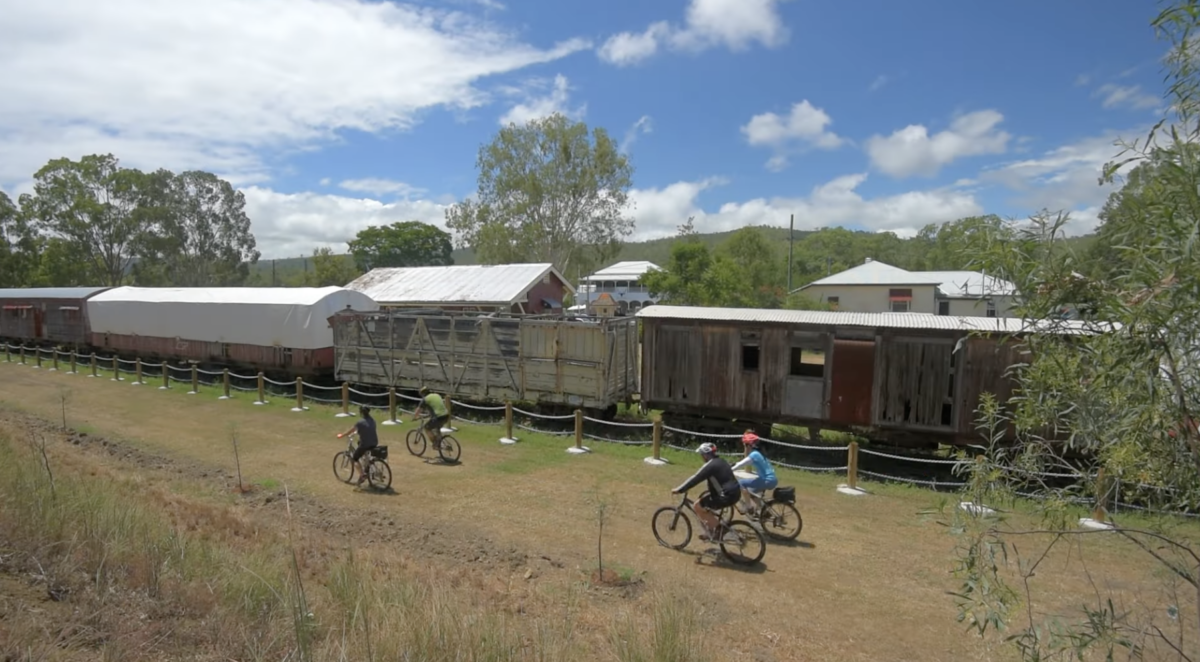Bicycle Queensland and Queensland Walks call for urgent safety upgrades to the Bicentennial Bikeway at North Quay following a tragic incident in which a 72 year old pedestrian died after a collision with a cyclist on October 16.
Both organisations extend their condolences to the family of the pedestrian who died. The crash is now understood to be being investigated.
On 20 October, just days after the crash, Bicycle Queensland and Queensland Walks conducted a joint site inspection in which the crash had occurred. The inspection revealed a poorly managed and unsafe environment. In particular –
- The bikeway has various forms of line and pavement markings with crossing points between people walking or riding being confusing for all users.
- Construction fencing running along the sides of the bikeway limit users’ line of sight, and
- 10km per hour bike speed zones appear to have been erected after the accident, a speed which most bike riders and e-scooter riders find impossibly slow to ride at.
Bicycle Queensland Interim CEO Lisa Davies Jones said the various treatments on the bikeway were clearly confusing, “While we were carrying out our site inspections, it was clear that pedestrians were nervous crossing and that cyclists were confused by the line marking.”
“In the time we were there, we observed a near-hit between a cyclist and a pram and a grandmother approached us to say it was a dangerous location and alerted us to the sad death.”
The Bicentennial Bikeway, which opened in 1988 is critical piece of infrastructure, with an average daily use of 5,284 people – 3,461 bike riders and 1,823 walkers, and many more people accessing the ferry, making it one of the country’s busiest pathways. 40% of path users are commuters, 40% use it for recreation and the remaining 20% use it for errands, shopping and social visits.
Together, Bicycle Queensland and Queensland Walks have written to Lord Mayor Adrian Schrinner, Brisbane City Council and Minister Mark Bailey, Minister for Transport and Main Roads and Minister for Digital Services, calling for:
1. Adoption of ‘The Safe Systems Approach’ on all bike and pedestrian infrastructure: the approach, which is standard on road infrastructure is based on the principle that people can make mistakes without facing a serious risk of injury or death.
2. Comprehensive Review of Construction Standards: Brisbane City Council and Transport Main Roads are urged to undertake a thorough review of construction standards for bike and pedestrian infrastructure, aligning them with the same stringent standards applied to roads.
The organisations also call for an urgent review of safety and markings on the Bicentennial Bikeway.
Anna Campbell, Executive Officer for Queensland Walks, adds: “Our deepest sympathies go out to the victim’s family, and we are committed to working towards a safer Bicentennial Bikeway. Walkers and riders should not have to navigate an environment where confusion and risks persist. We call upon the Brisbane City Council and the State Government’s Department of Transport and Main Roads to prioritise the safety of people who walk and ride by implementing improved standards and ensuring that safety is paramount.”
The pedestrian death on the Bicentennial Bikeway came just four days after the release of the coronial report into the 2020 death of cyclist Carolyn Lister near the Royal Brisbane Hospital. She was hit by a truck after construction blocking her usual footpath cycling route forced her onto the roadway at the busy intersection of O’Connell Terrace and Bowen Bridge Road.
“Twice in a week we have been confronted with circumstances in which people have lost their lives in part because construction impacts on bike and pedestrian infrastructure have not been well managed,” Lisa Davies Jones said.
“While every crash involves a complex set of decisions and circumstances, it is the case that these ad hoc treatments would not occur if active transport corridors were taken as seriously as roads.”
“With the Bicentennial Bikeway taking as many as 3,000 cars a day off the roads, it should be treated as a serious piece of transport infrastructure with construction impacts properly managed.
We now call for this change of mindset on the part of the councils and governments who manage active transport infrastructure and the construction contractors whose actions affect it.”
Walkers and riders represent 14% of Queensland road users who lost their lives (2018 – 2020)* Queensland Road Safety Strategy, and data released in August by the Australian Automobile Association showed the number of cyclists who died on Australian roads increased by 24.3% from 2022 to 2023.
For media enquiries, please contact:
Lisa Davies Jones
CEO – Bicycle Queensland
Mb: 0449 520 778
Email: l.daviesjones@bq.org.au
About Bicycle Queensland (BQ):
BQ is the state’s peak industry body representing the needs of almost 800,000 Queenslanders who ride a bike for recreation or transport, every week. BQ has a 40-year history of successful advocacy as a leader in the field of bicycle advocacy with local councils, as well as state and federal government bodies. And through our educational (activation) programs encouraging more people, to ride, more often.
